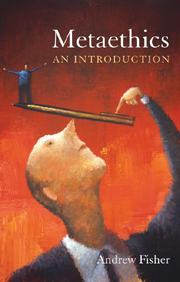Book contents
- Frontmatter
- Contents
- Preface
- Introduction
- 1 The open question argument
- 2 Emotivism
- 3 Error theory
- 4 Moral realism and naturalism
- 5 Moral realism and non-naturalism
- 6 Quasi-realism
- 7 Moral relativism
- 8 Moral psychology
- 9 Moral epistemology
- 10 Fictionalism and non-descriptive cognitivism
- Questions
- Glossary
- References
- Index
5 - Moral realism and non-naturalism
- Frontmatter
- Contents
- Preface
- Introduction
- 1 The open question argument
- 2 Emotivism
- 3 Error theory
- 4 Moral realism and naturalism
- 5 Moral realism and non-naturalism
- 6 Quasi-realism
- 7 Moral relativism
- 8 Moral psychology
- 9 Moral epistemology
- 10 Fictionalism and non-descriptive cognitivism
- Questions
- Glossary
- References
- Index
Summary
Good is indefinable not for the reasons offered by Moore's successors, but because of the infinite difficulty of the task of apprehending a magnetic but inexhaustible reality.
(Murdoch 1970: 42)Non-naturalism has a musty reputation, redolent of Oxbridge dons delivering the opinions of the “best and most enlightened of men” who perceive goodness just as mortals perceive yellowness … In histories, it is noted chiefly as the theory so unacceptable that it inspired the non-cognitivists.
(Shaver 2007: 283)CHAPTER AIMS
To explain the attractions of combining non-naturalism and moral realism.
To outline two non-naturalist realist positions.
To discuss the difficulties involved in demarcating naturalism from non-naturalism.
Introduction
As we discussed in the previous chapter, realism claims that:
Moral judgements express beliefs that describe the world, and consequently moral judgements can be true or false (cognitivism).
Moral judgements are sometimes true and are so in virtue of features of the world.
The truth of moral judgements is not decided by how individuals, groups or societies think; for example, it is possible for everyone to be mistaken in their moral judgements.
The realism of this chapter differs from that of the Chapter 4 because it claims that the features that make moral claims true are not natural features but rather they are non-natural.
- Type
- Chapter
- Information
- MetaethicsAn Introduction, pp. 73 - 90Publisher: Acumen PublishingPrint publication year: 2011



